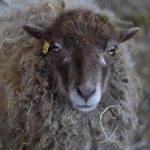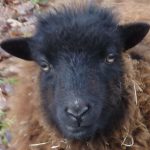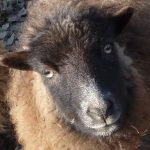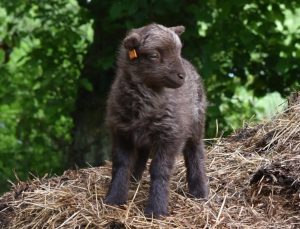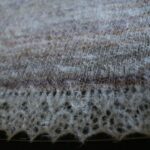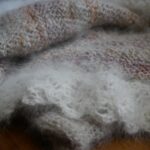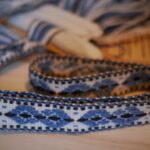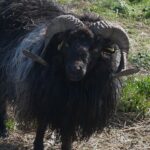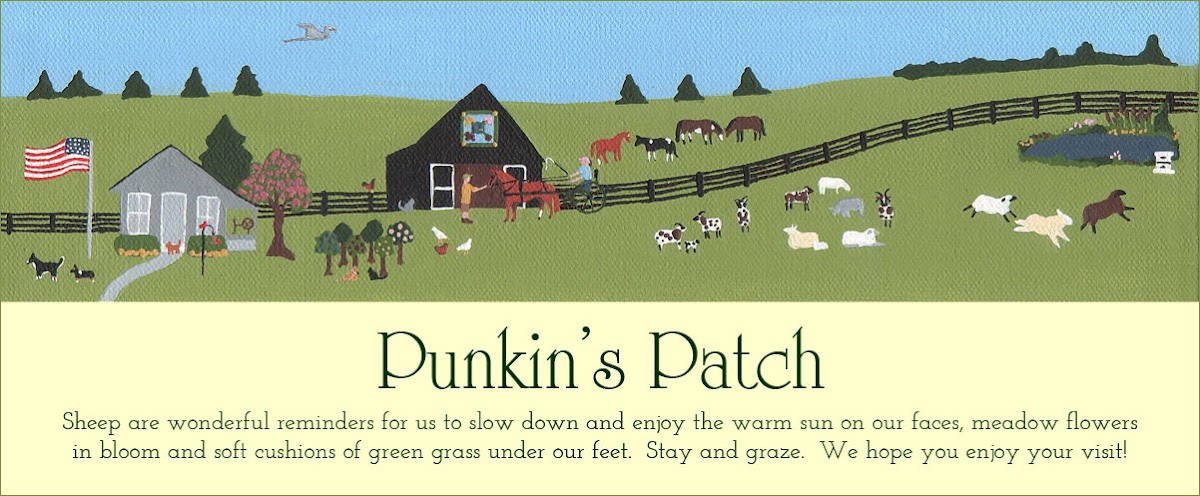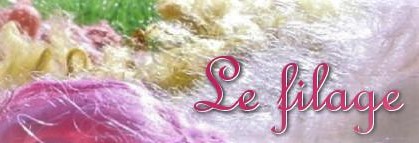De la Toison au Tricot n° 123 : Travailler avec la soie mawata
Silk, a protein fiber of animal origin, is a true luxury fiber.
Produced by the Bombix mori silk worn, silk comes from the cocoon that is spun by the caterpillar. Each cocoon is made from one single thread of silk that measures almost 1 mile in length !
Of course there are several different ways to transform the silk cocoon into a fiber that can be spun.
One of the oldest traditional ways of doing this is by making mawata. Mawata, also know as a silk hankie, is made from one single silk cocoon : after having removed the caterpillar, the cocoon is stretched over a square frame.
Essentially, mawata silk hankies come in the form of a small square pile of silk.
La soie, fibre de luxe, est une fibre protéique d’origine animale.
Produite par un ver à soie, notamment le Bombix mori, la soie est issue du cocon fabriqué par la chenille. Chaque cocon est fait d’un seul fil qui mesure approximativement 1,5 Km de longueur.
Toutefois, il y a plusieurs méthodes pour transformer le cocon du ver à soie en fibre qui peut être filée.
Une technique assez ancienne est celle du mawata. La mawata, ou “mouchoir de soie” est fabriquée à partir d’un seul cocon qui a été vidé de sa chenille, puis étiré sur un petit cadre.
Bref, la mawata se présente comme un petit tas carré.
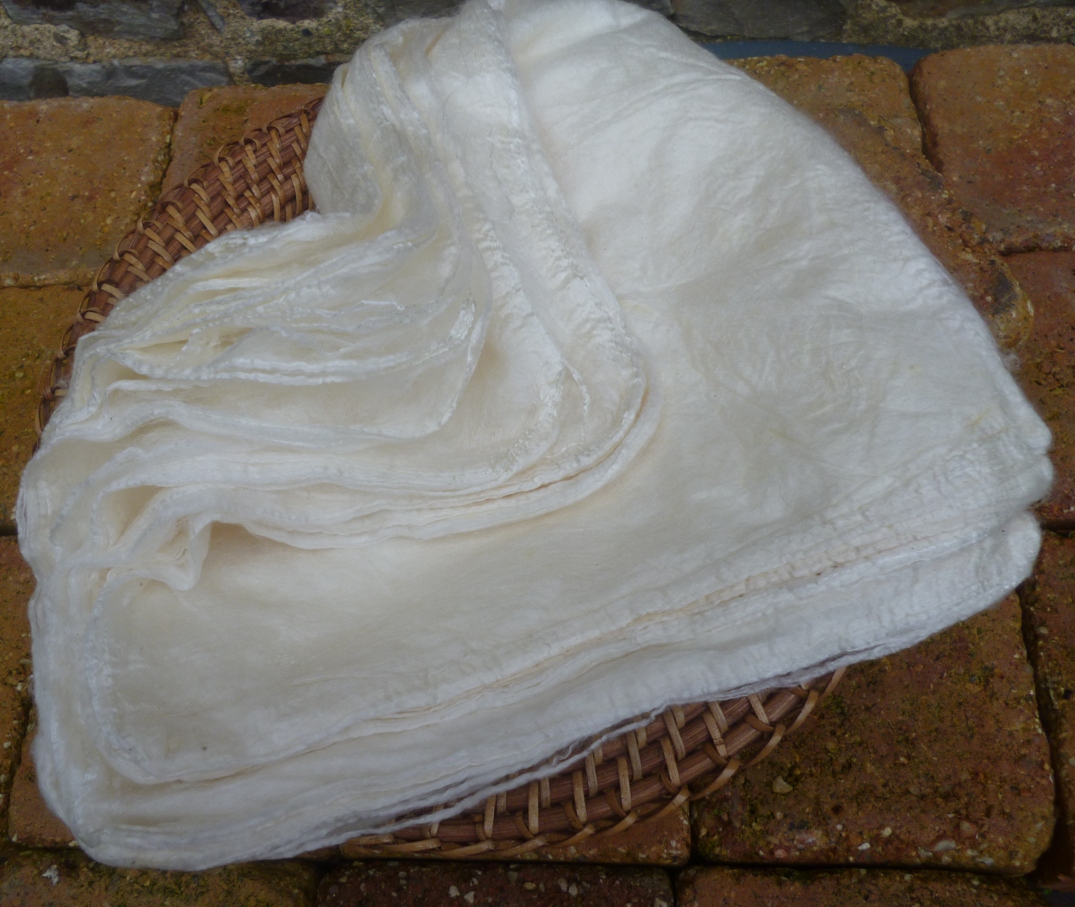
Each little pile of silk mawata is actually made up of many thin layers, with each layer being made from one silk cocoon !
Chaque petit tas de mawata comprend plusieurs couches fines où chaque couche est un cocon !
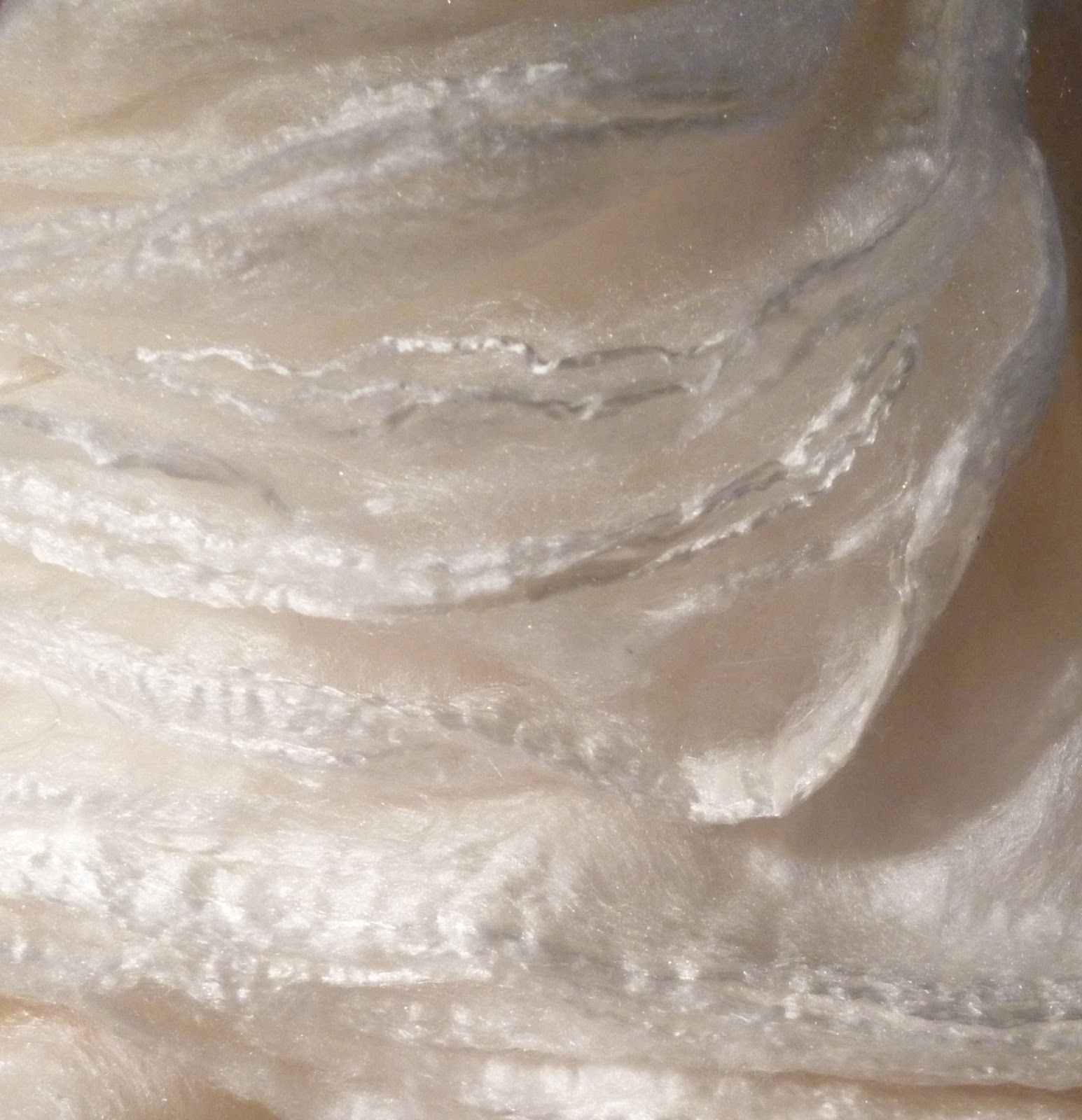
Mawata silk hankies are of particular interest to the Spinning Shepherd because they are easy to dye and easy to work with.
Also, it’s worth mentioning that silk is a very lustrous fine fiber : once dyed, the colors are absolutely marvelous.
La mawata est particulièrement intéressante pour la Bergère-Filandière car elle est facile à teindre et facile à travailler.
Il faut souligner que la soie est une fibre très fine et brillante : lorsque la soie est teinte, les couleurs obtenues sont tout à fait merveilleuses.
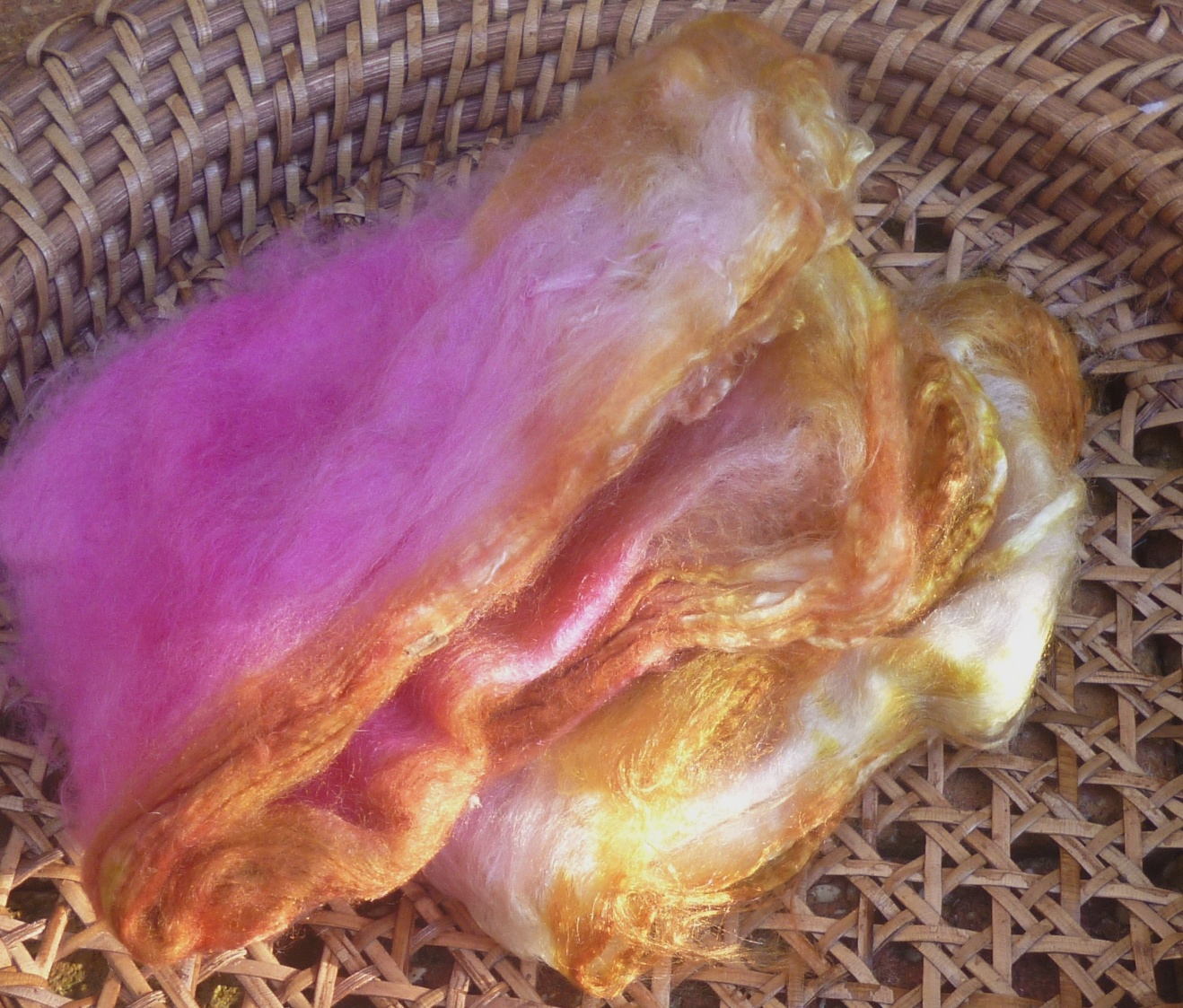
When working with mawata, you first need to carefully remove one single layer of silk. But you must be careful to only remove just one layer !
Pour travailler la mawata, il faut d’abord enlever une seule couche de soie. Mais il faut faire attention de n’enlever qu’une seule couche.
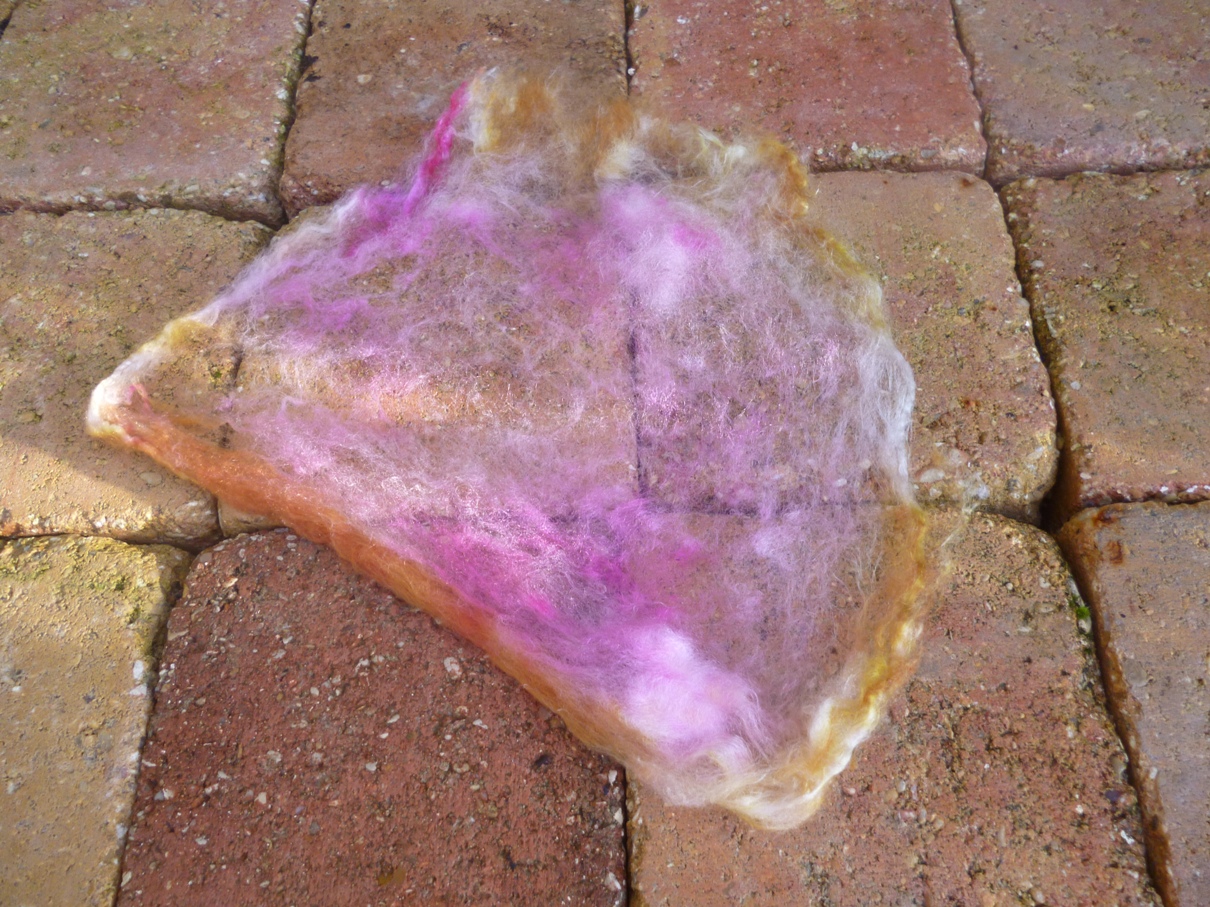
Then with the index finger and thumb, make a hole in the middle of the silk square and start to enlarge the square by gently pulling on the silk. Basically, you are transforming the silk square into a silk loop.
Puis avec pouce et index, faire un trou au milieu du carré de soie et tirer doucement. Effectivement, on transforme le carré de soie en une petite boucle de soie.
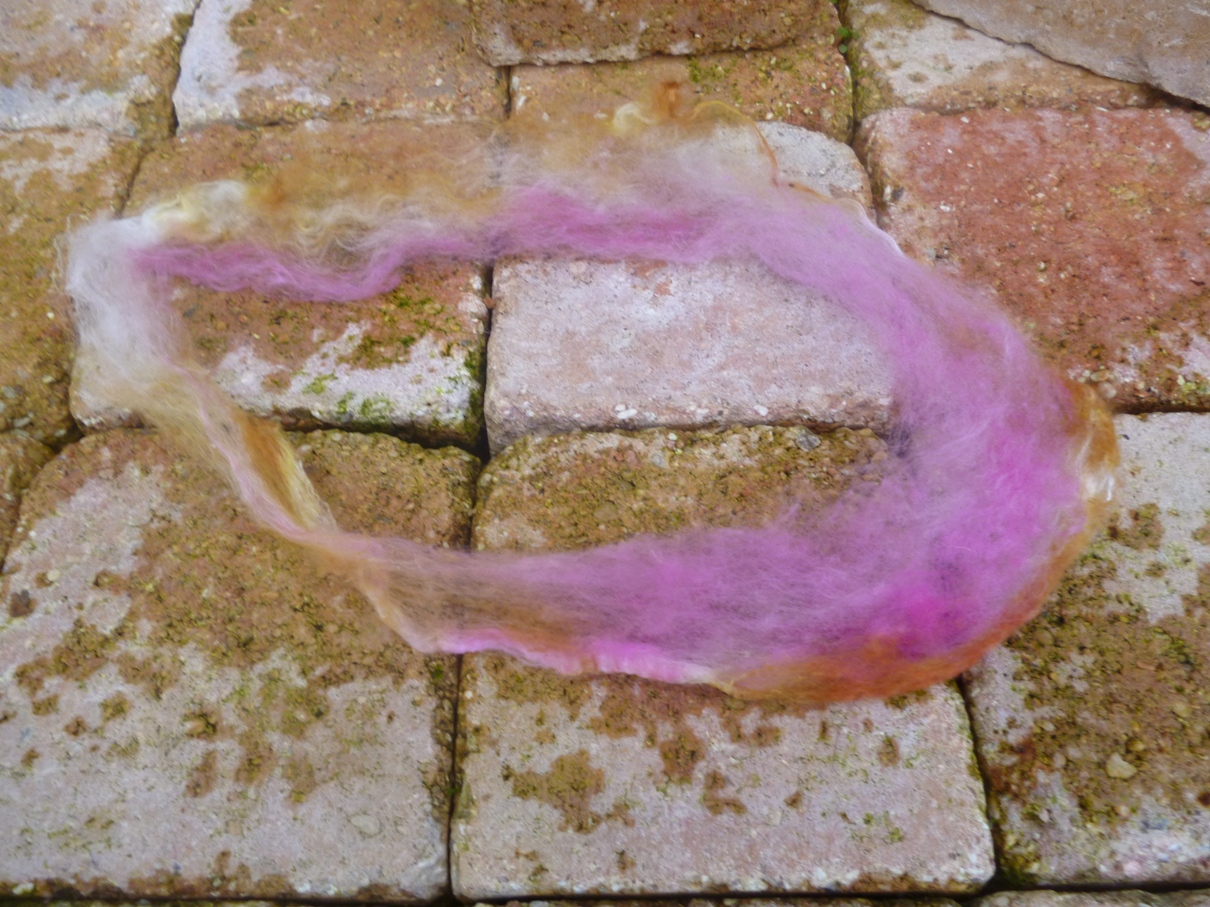
Continue stretching the silk loop. Note that as you stretch the silk hankie, the fibers will naturally line up perfectly.
On continue d’étendre la boucle de soie. Il faut noter qu’en étendant la boucle de soie, les fibres s’alignent naturellement.

Once the loop of silk has been stretched out and all of the fibers have straightened up, you’re ready for the next step. At this point the loop of silk will be about 10 foot around. Stretch out the loop so that you have two bands of silk that are parallel, each measuring approximately 5 foot. Then, with a pair of scissors, cut the silk loop at both ends.
Lorsque la boucle de soie est bien étendue et que toutes les fibres sont démêlées et alignées, on est prêt à passer à la prochaine étape. À ce stade, la boucle de soie aura à peu près 3 mètres de circonférence. Étendre la boucle pour faire en sorte que les deux rubans de soie de 1,5 mètres soient parallèles. Puis, avec une paire de ciseaux, couper la boucle de soie à chaque bout.
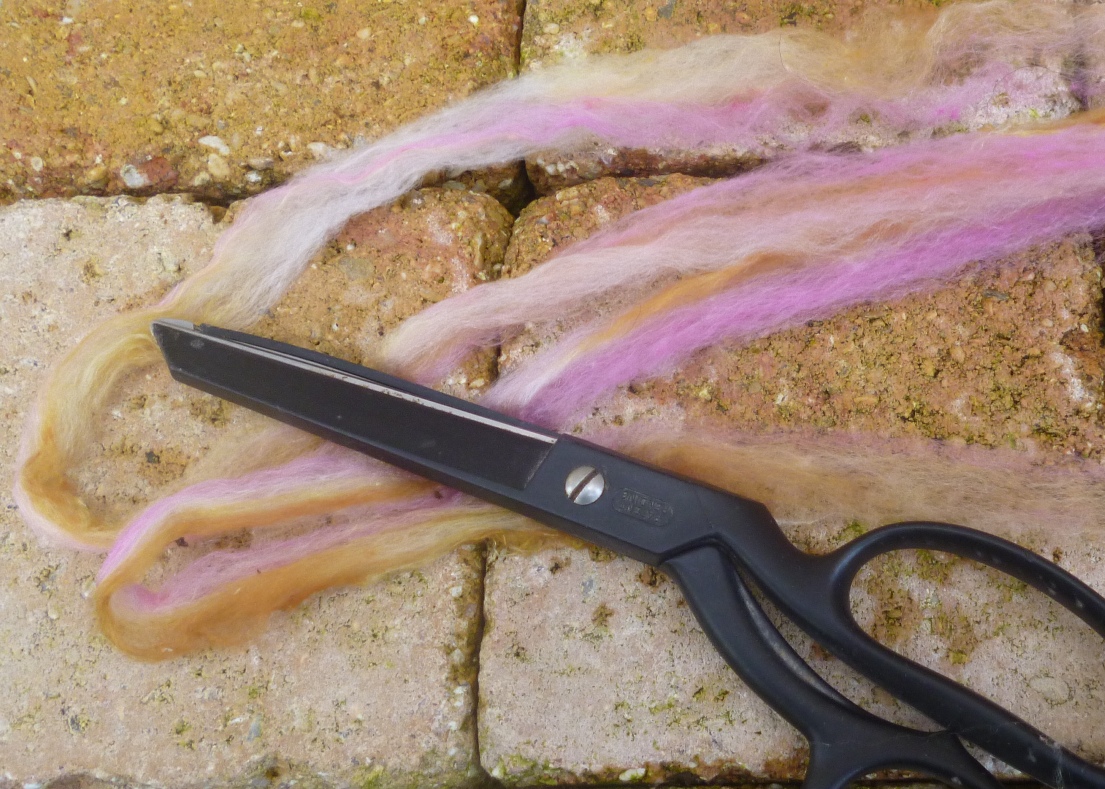
Now you have a band of silk top that measures 5 foot. You need to fold the silk in half and then cut the folded end. Now the band of silk top measures 2.5 foot in length.
Maintenant le ruban de soie mesure 1,5 mètres. Il faut le plier en deux et ensuite couper le bout qui a été plié. Maintenant le ruban de soie mesure 75 cm de longueur.
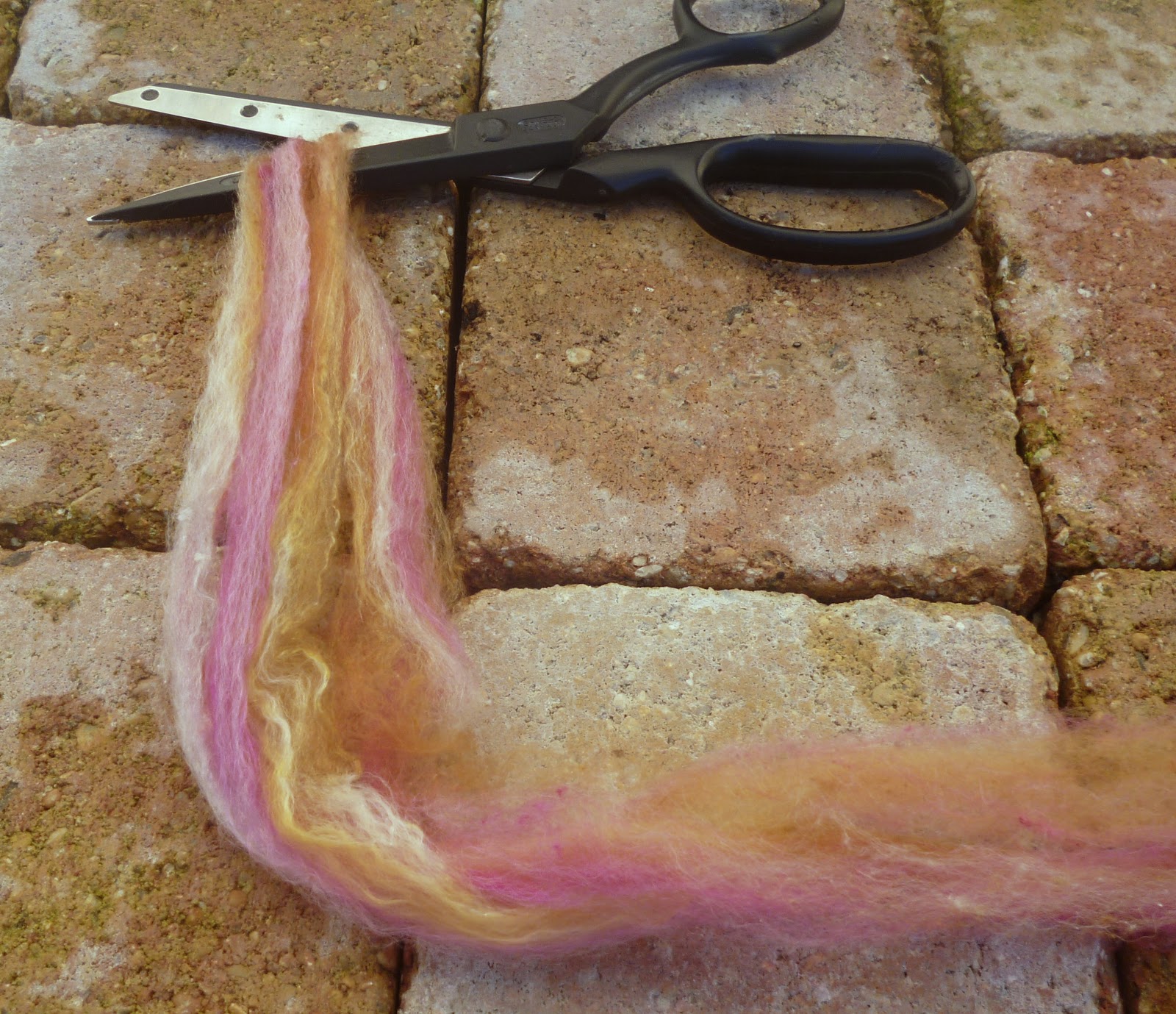
Continue to fold and cut the silk top until you end up with the “right length.” But be careful : Remember that in order to create a nice blend, it’s very important that the fibers being blended are more or less the same length. Insofar as I want to blend silk and Ouessant wool, I will aim for my mawata to be about 4″ long.
Continuer de plier et couper le ruban jusqu’on arrive à la “bonne longueur”. Attention : pour faire un beau mélange, il faut que les fibres aient plus ou moins le même longueur. Dans la mesure où je veux mélanger la soie mawata avec la laine Ouessant, je vais faire en sorte que la soie mawata ait à peu près 10 cm de longueur.
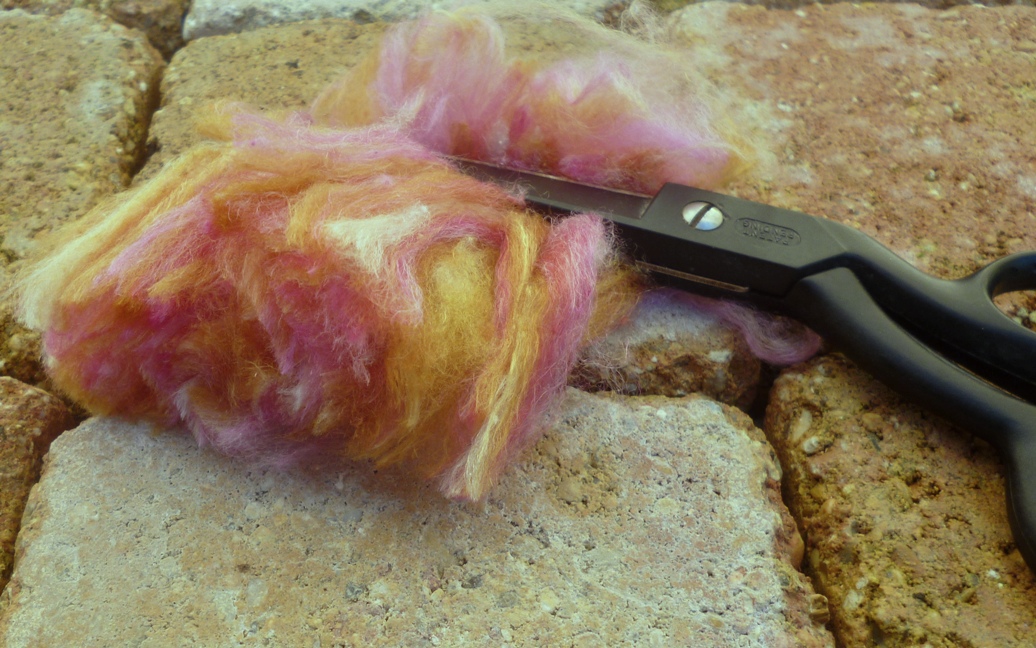
I want to make a blend of 80% Ouessant wool and 20% silk. To do this, I start with Ouessant wool that has been combed & is ready to be spun and mawata silk top that has been cut to the right length. Knowing that I can easily work with 10 grams of fiber at a time on my wool combs, I weigh out 8 grams of Ouessant wool and 2 grams of silk.
Je veux faire un mélange de 80% laine Ouessant et 20% soie. Pour ça, je commence avec de la laine Ouessant peignée et prête à filer et de la soie mawata en ruban coupée à la bonne longueur. En sachant que je peux facilement travailler 10 g de fibres à la fois avec mes peignes à laine, je pèse 8 g de laine Ouessant et 2 g de soie.
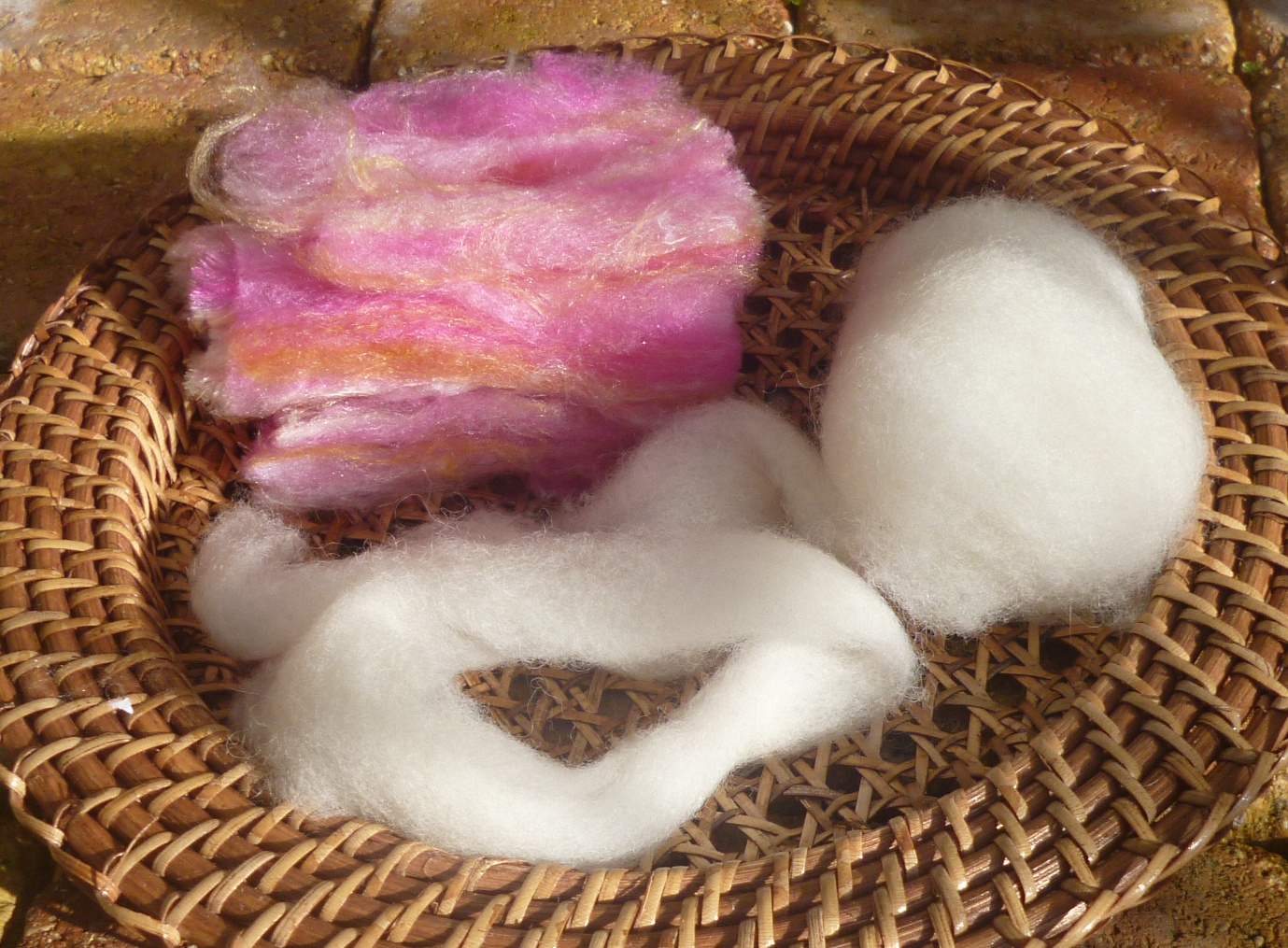
I then load the stationary comb with thin alternating layers of silk and wool.
Je charge la laine et la soie sur le peigne fixe en petites couches alternées.
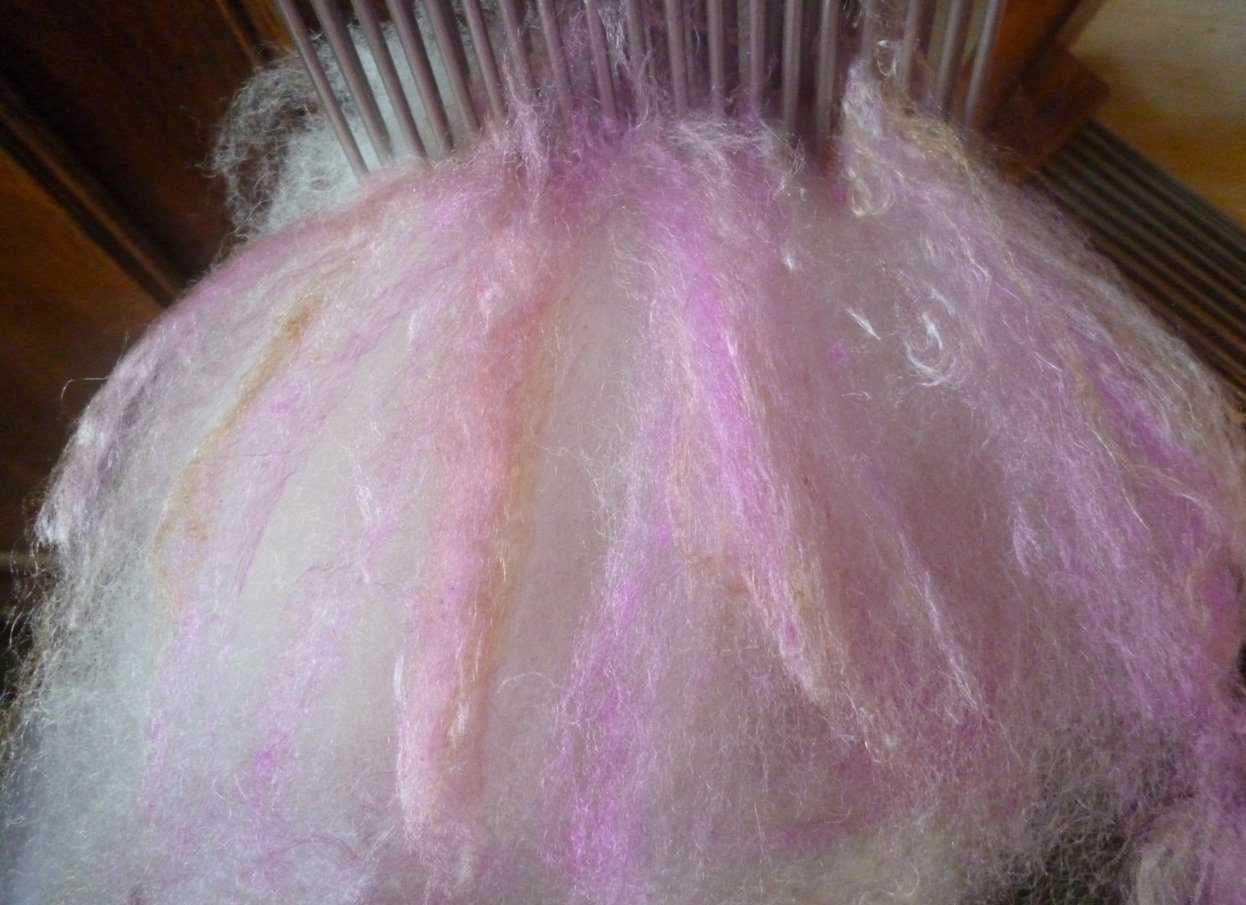
After having combed these two beautiful fibers together, I ended up with a gorgeous blend of silk and Ouessant wool just waiting to be spun.
Après avoir peigné ces deux belles fibres ensemble, j’ai fini par avoir un beau mélange de soie et de laine Ouessant prêt à filer.
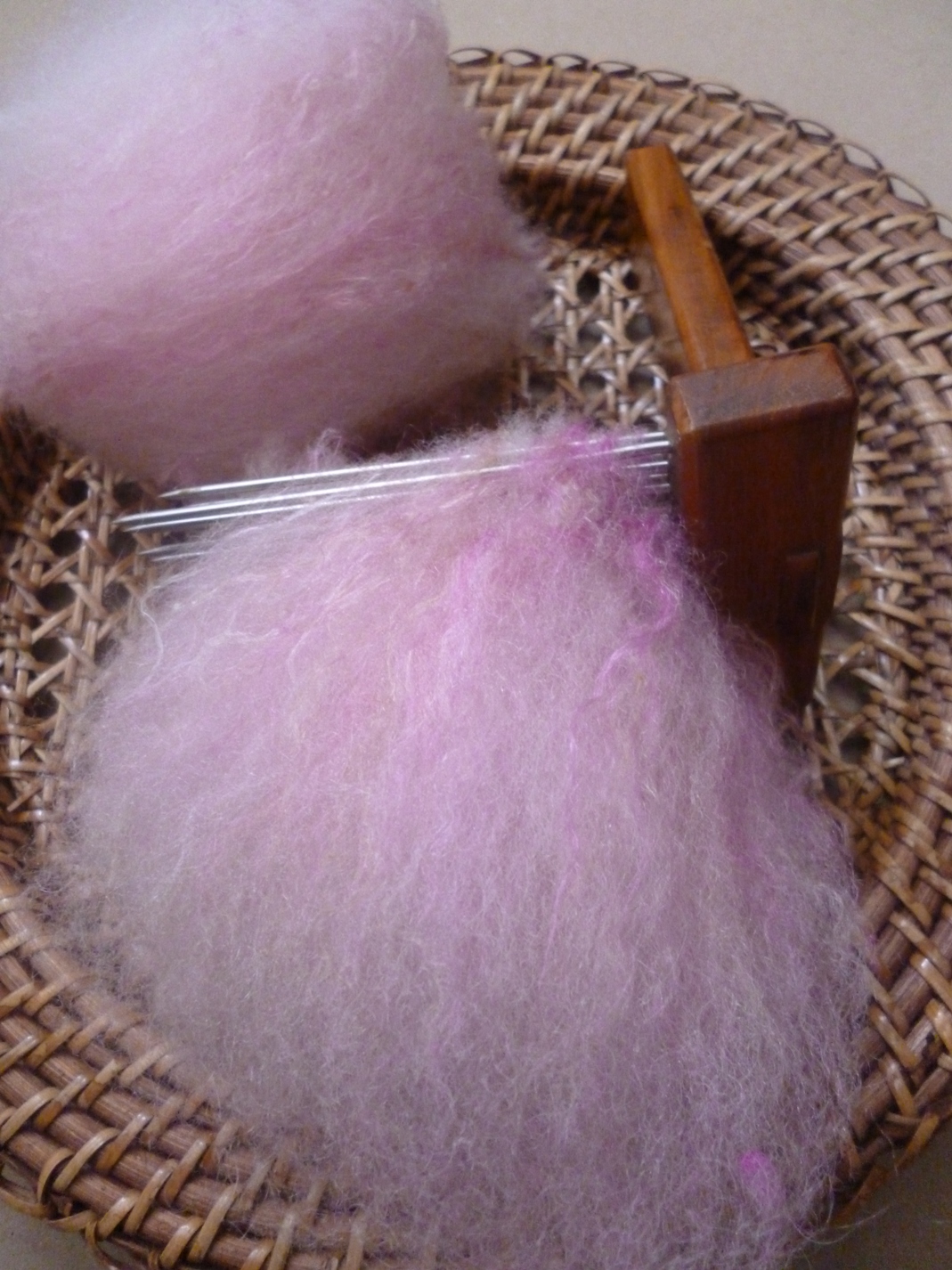
Yes, that’s right !
You can easily blend mawata silk hankies with wool for a beautiful luxurious yarn !
Oui, c’est vrai!
On peut facilement mélanger la soie mawata avec la laine pour faire un beau fil de luxe !



